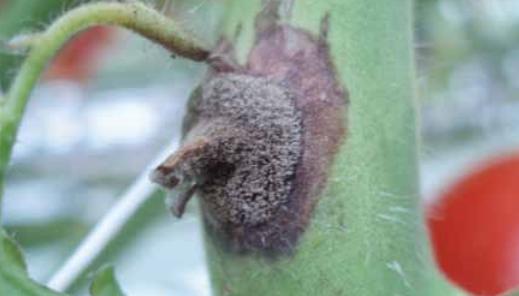Grey mould (Botrytis) of protected tomato is a widespread, common and potentially devastating disease. It can affect all parts of the growing crop and is also a cause of postharvest fruit rot. With increasing adoption of measures that reduce heat use during crop production, there is a greater risk of damaging attacks by Botrytis.
Grey mould of tomato caused by the fungus Botrytis cinerea is found wherever the crop is grown. Damaging attacks, are more commonly seen following persistent wet weather, where the standard of crop work is poor, in unheated or part heated crops, in older glasshouses with little height above the crop, where there are leaking vents or dripping gutters and towards the end of cropping.
Botrytis can infect leaves, petioles, stems, flowers, fruit and fruit trusses; the fungus has also been recovered from seeds and roots. Leaf and stem symptoms are the most common. These may occur on both young and older growth. Pale to dark brown lesions, often with concentric zones from the leading edge, develop on leaves, petioles and stems. A characteristic sign of the disease is the dense fuzzy grey-brown sporulation that develops on necrotic tissue; under humid conditions, clouds of spores are released if the tissue is shaken. Stem lesions often girdle the stem resulting in death of the parts above.
It is difficult to exclude Botrytis from a crop as the pathogen is very common in the environment. The most appropriate and cost-effective course of action is to take measures to prevent stem and fruit infection, the most damaging forms of the disease.












